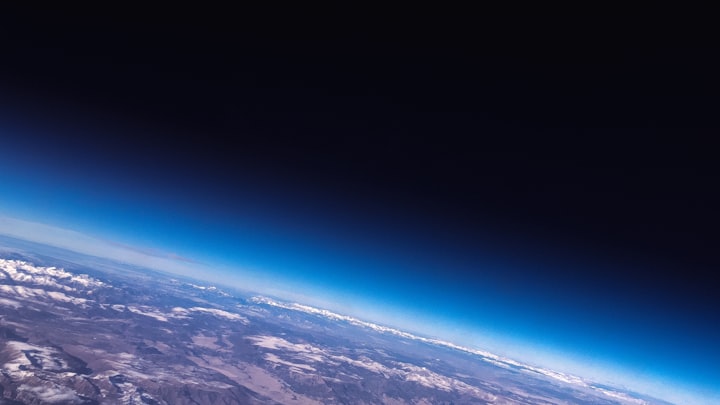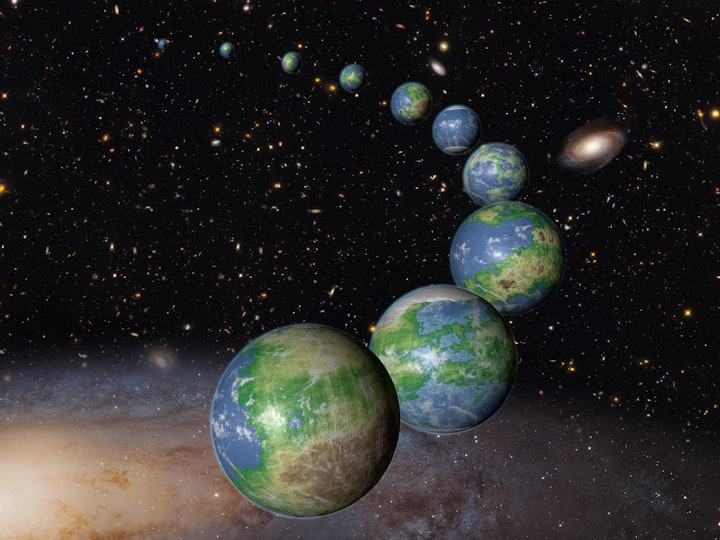There were once three Earths in our solar system - where are the other two? Scientists issue warning
Three Earths existed in our solar system

13.82 billion years ago, a dense 'dot' exploded. Unlike the usual understanding of explosions, this one emitted no light or sound, just a messy, dense quantum state that was blacker than normal.
At the moment of the explosion, the concepts of time and space began to emerge, and several familiar elementary particles followed. Some 500 million years later, the heat from the explosion was 'diluted' by the rapid expansion of space, and the first generation of stars in the universe began to emerge as a result of fundamental forces.
A billion or so years later, all kinds of cosmic dust began to accumulate under the gravitational pull of the stars, eventually becoming planets orbiting the stars, and the most basic system of objects in the universe, the stellar system, began to emerge.
In fact, from the first time mankind had the idea of a solar system, there has been a constant desire to understand completely how it was formed, just as there has been a desire to know how the seeds of life 'sprouted' on Earth.
But no one has a time machine, and we are not destined to be able to reverse the flow of time and see how our solar system was formed billions of years ago.
However, even if we can't see it with our own eyes, that doesn't stop us from knowing the answer to our question, because there are too many stars like our solar system in the universe to even put a number to it. This leads to a universe where new stars are born and old ones die out almost every minute of every day.
If we had to find out how our solar system differs from these star systems, the only difference would probably be human beings, so by observing the birth of other stars and star systems, we would be able to know how the Sun and our solar system were born and how they evolved.

To put it simply, the solar system, now full of order, was originally just a vast nebula. By chance, the densest region of this nebula collapsed inwards, and the Sun in its most primitive state was born.
Under the influence of gravity, the Sun began to slowly absorb the remaining nebula material, increasing in mass and gravity, and eventually becoming the Sun as we know it today. The "remnants" that were not absorbed by the Sun were then transformed by gravity into the planets we know as Jupiter, Saturn, Mars, and the Earth, to name but a few.
It is probably inconceivable to many that when the solar system was first formed, there were not even eight planets, as there are now, but a staggering one hundred or more.
Although the solar system was so empty that there was room for more than 100 planets, at the beginning of the galaxy, the planets did not have fixed orbits, so collisions became a very "common" occurrence due to the various forces that disturbed them.
Scientists have speculated and calculated that the asteroid belt around Mars is most likely the result of planets colliding with each other.

Of course, as one of the many planets, the Earth also experienced a period of collision. The prevailing theory is that 4.6 billion years ago, shortly after the Earth was formed, it collided with a planet the size of Mars.
But it's a good thing it wasn't a head-on collision but a sideways brush, otherwise, the asteroid belt around Mars might have grown a little larger.
The collision not only shifted the Earth's axis of rotation but also resulted in the formation of the Moon as we know it, which would have greatly reduced the likelihood of the Earth harboring life.
It is worth noting that to study the evolution of the solar system, scientists have used mathematical and physical methods to build an evolutionary model from which it was accidentally discovered that there were three "Earths" when the solar system was first formed.
But then the question arises: why is only one of the three "Earths" left today? What happened to make the other two disappear for no apparent reason?
The two "lost" Earths are still around us, but they have new names - Venus and Mars.
They are 'Earths' because, at the beginning of the solar system, these two planets probably had better conditions than the Earth at that time, and had all the conditions for life.
That's why many scientists have speculated that Venus and Mars could have been home to simple life long before the Earth was home to live.
So is there life on Venus now? The answer is no. Venus is an environment where even highly sophisticated robots, not to mention carbon-based life, would not be able to safely stay for hours at a time.
Because 96% of Venus' atmosphere is carbon dioxide, life would not be able to breathe on it. And the thick atmosphere acts like a shed, "locking" the temperature in, making the surface temperature as high as 462 degrees Celsius.
If you think Venus' temperature is the only thing that's scary about it, you're underestimating it. The vast amount of carbon dioxide on Venus is not only incredibly hot but also high-pressure.
According to scientists' calculations, the atmospheric pressure on the surface of Venus is 92 times higher than that of Earth, which would make lung-breathing creatures completely unviable on Venus.
So how did Venus go from an environment comparable to that of Earth to the purgatory it is today? It is actually due to several reasons.
Venus, for example, was hit by an extremely dense and massive meteorite strike billions of years ago. The years of meteorite attacks built up a lot of energy inside Venus, which led to a global and continuous volcanic eruption.
The volcanic eruptions, in turn, led to a dramatic increase in the levels of greenhouse gases such as carbon dioxide and sulfur dioxide in the atmosphere, and the gradual dissipation of liquid water under high temperature 'steaming' and solar radiation. In this vicious cycle, Venus has become a veritable "hell on earth".
Unlike the main cause of Venus' solar radiation, Mars, which is in the same habitable zone as Earth, has become barren mainly because of its magnetic field.
Because it is a rocky planet, Mars has a core of iron-nickel, like Earth's, but it is much smaller than Earth's, at just over half the size.
We all know that the size and temperature of a planet's core directly determines the strength of its magnetic field. Since Mars' core is inherently small, early geological movements caused the core to begin to lose heat until it eventually cooled completely.
Without the 'pull' of the magnetic field, the Martian atmosphere was unable to withstand the solar wind. The atmosphere was stripped away and the air pressure on the planet's surface plummeted. In this low-pressure environment, liquid water begins to sublimate almost irreversibly, and Mars finally follows in the footsteps of Venus, becoming a nearly dry 'dead' planet.
It is worth noting that as Mars has been explored in recent years, scientists have discovered huge "ice caps" at the planet's poles, which are expected to contain large amounts of liquid water. If there was ever life on Mars, there is a good chance that some traces of it could be found in this liquid water.
More importantly, since Mars is in many ways very similar to Earth and contains liquid water, a material essential for life, it could be the first stop for human conquest of the universe in the future.
In general, the seemingly stable planetary environment is extremely variable, and with a little "bad luck" it could go from being a planet of life to a planet of death.
This is certainly worrying and frightening, because with the current state of technology if the Earth becomes Mars 2.0 or Venus 2.0, there is only one way to destroy humanity. And this is why scientists have been issuing frequent warnings in recent years.
About the Creator
Clemmens Crofton
An eye for an eye thought for an obsession.






Comments
There are no comments for this story
Be the first to respond and start the conversation.